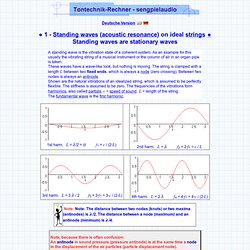

1d or 2d QRD diffusor. Thank you for your very quick reply.Question: How do you know what minimum and maximum well depth to enter?

How do you know what well width to enter? These questions go with this concept: How do you know which frequency that you want to diffuse, because from reading similar posts, the well width is 1/2 the frequency of the one that you want to diffuse (I think I got that right.) =================== I am building a drum, acoustic instrument, and amp isolation recording room. Threads are here, because I didn't get a post in this studio construction sub-forum. Acoustic treatment - drum room Acoustic treatment - drum room room width = avg. 24' from wall side 1 to wall side 2 (splayed, so the walls are not parallel) 1. wall side 1: 17' L x 10' H (covered by 12" cedar wall Tongue and Groove planks) 2. wall side 2: 12' L x 16' H (helmholtz bass traps) + 5' for entrance door 3. 4. 5. 6. hardwood floor with area rug underneath bass drum so it doesn't slide. Studios and Labs for Acoustic Engineering, Audio and Video Engineering.
What is it for?

Acoustic engineers need to know how people respond to sound so they can design products to sound better. The listening room is an acoustically neutral environment for perceptual testing. In this room we might test which surround sound system creates a realistic sense of being enveloped by sound, the perceptual quality of hi-fi components or which hair dryer makes the least annoying noise. While it is possible to carry out perceptual tests in the anechoic or semi-anechoic chamber, the visual and aural environment of the listening room is more like a normal room. Expectation and emotional state affect listener judgements, and so the listening room is often preferred to get more natural reactions.
Example application Ofcom, the regulator for the communications industries, wanted us to find out how to improve the intelligibility of dialogue for the hearing impaired, without overly impairing the enjoyment of programs for those without hearing loss. ISVR Consulting - Loudspeaker listening room. SBIR - Page 3. Just a comment.

Comb filtering is not a wave behavior. It is a category mistake to equate modal and SBIR interference patterns, which differ only in the focus upon global or local behaviors within the larger context of the interaction and distribution of bounded waveforms distribution, resulting in in a subsequent physical distribution with comb filtering which is simply a 'pattern' existing in a measurement display.
Comb filtering has no physically existing component! ALL interactions of wave behavior are superposition. In all cases the result is a spatial distortion pattern, be it polar lobing or modal (eigenvalue) distribution. Comb filtering is an abstraction that describes how a physical spatially distributed energy patter is displayed when one measures the frequency response corresponding to the physical energy distribution of the soundfield. (This probably won't help, but it is as if we measure Bob's height and discover that Bob is 73 inches tall.
Standing waves acoustic resonance and vibrations on strings string - Standing waves are stationary waves room modes sound pressure level between hard parallel walls node antinode stationary room acoustic frequency. ● 1 - Standing waves (acoustic resonance) on ideal strings ●Standing waves are stationary waves <table><tr><td bgcolor="#0000FF"><span><b>The used browser does not support JavaScript.

<br />You will see the program but the function will not work. </b></span></td></tr></table> 2 - Standing waves (acoustic resonance) on pipes (flutes) 3 - Room modes (standing waves) between sonically hard parallel walls Where do I set up my speakers? A standing wave as sound pressure distribution: 3rd harmonic (2nd overtone) − 3 nodes and 4 antinodes Room modes as sound pressure distribution Calculation of the three modes (eigenmodes) - resonances of rectangular rooms An eigenmode (eigentone) is the European name for a standing wave.
Not good: Standing Wave - Wikipedia and Resonant room modes - WikipediaThis is correct : From Wikibooks, the open-content textbooks collection The Pressure Chamber Effect Amplitudes of the Soundfield Quantities of a Plane Wave.